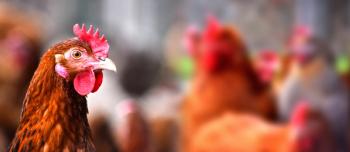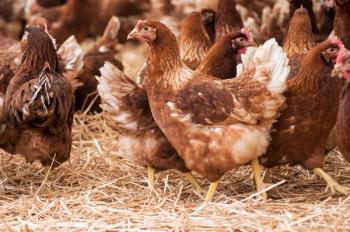
Image Quiz: A cat with a large tail mass
Correct answer Image Quiz: A cat with a large tail mass
Leiomyosarcoma is correct!
Figure A shows the portion of the neoplasm composed of spindle-shaped cells and polygonal cells (hemotoxylin and eosin staining). The neoplastic cells tested positive for smooth muscle actin (Figure B) and vimentin (Figure D) and negative for cytokeratin (Figure C), lysozyme (Figure E), and desmin (Figure F). Only 30% of the neoplastic cells tested positive for vimentin (Figure D). Note that the macrophages surrounding the neoplasm stained positive while neoplastic cells stained negative with the anti-lysozyme antibody (Figure E). Similarly, skeletal muscle associated with the neoplasm tested positive for desmin, while the neoplastic cells did not (Figure F). Based on these results, the neoplasm was diagnosed as a leiomyosarcoma.
Cytokeratin and vimentin are intermediate filaments that make up one of three components of a cell's cytoskeleton. Cytokeratin is found mainly in epithelial cells, and vimentin is normally present in adult mesenchymal cells. Hence you can differentiate carcinoma and sarcoma by using these markers.
Smooth muscle actin is specific to smooth muscle cells and is absent in skeletal muscle. So smooth muscle actin staining helps to differentiate a neoplasm originating from skeletal muscle and smooth muscle.
Lysozyme is a marker for histiocytes and is helpful in the diagnosis of histiocytic sarcoma. Desmin can stain both skeletal muscle and smooth muscle cells. However, there can be some variation; as seen in this case, desmin is staining only the skeletal muscle and not the smooth muscle cells.
It is difficult to distinguish leiomyosarcomas from other soft tissue sarcomas. This case highlights the importance of using both histopathology and immunohistochemistry to characterize morphologically similar tumors. To our knowledge, leiomyosarcoma in the tail base of a cat has not been previously described.
This quiz was contributed by Rebecca A. Lee, DVM, Department of Veterinary Clinical Sciences, College of Veterinary Medicine, Purdue University, West Lafayette, Ind.; Kyathanahalli S. Janardhan, BVSc, MVSc, PhD, DACVP, Integrated Laboratory Systems Inc. Research Triangle Park, N.C.; and Heather A. Towle, DVM, MS, DACVS, Department of Veterinary Clinical Sciences, College of Veterinary Medicine, Purdue University, West Lafayette, Ind.
Newsletter
From exam room tips to practice management insights, get trusted veterinary news delivered straight to your inbox—subscribe to dvm360.




